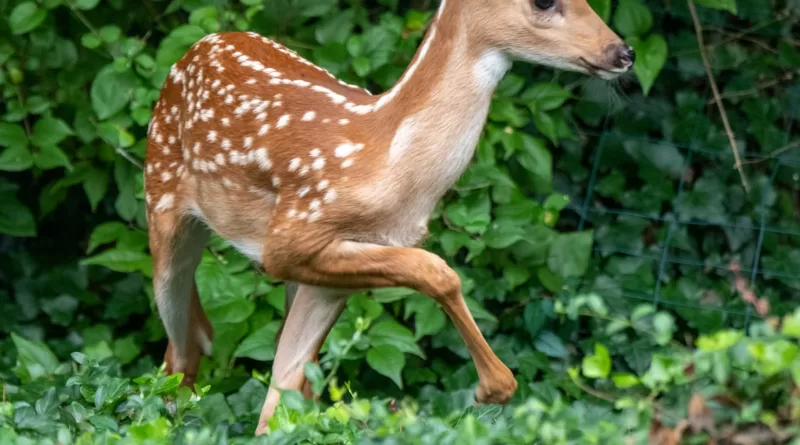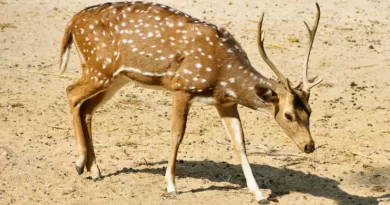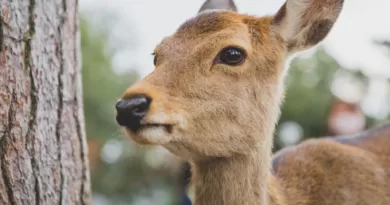Are Pansies Deer Resistant
Pansy Characteristics: Understanding the nature of pansies and their appeal in gardens
Pansies, scientifically known as Viola tricolor, are popular flowering plants that are widely appreciated for their exquisite beauty and delicate nature. These charming flowers are characterized by their cheerful, rounded petals, which come in a wide array of vibrant colors. With their compact size and abundant blooms, pansies make an excellent choice for garden enthusiasts looking to add a burst of color to their outdoor spaces.
One of the main reasons pansies are highly regarded in gardens is their ability to thrive in cooler climates. Unlike many other flowers, pansies actually prefer the cooler temperatures of spring and fall, making them a perfect choice for gardeners in regions with fluctuating weather patterns. Pansies have the remarkable ability to withstand frost and continue to bloom even when faced with cooler temperatures, making them a reliable and resilient addition to any garden. Their adaptability to varying climate conditions makes pansies a popular choice for landscape designers and homeowners alike.
Deer Feeding Habits: Exploring the feeding habits of deer and their preferences
Deer have a diverse and flexible diet, allowing them to adapt to different environments and seasons. They are primarily herbivores, meaning they mainly consume plant matter. Their preferred food sources include leaves, shoots, grasses, and fruits. In the spring and summer months, deer tend to graze on fresh pasture and browse on young, tender plants. As the seasons change and food becomes scarce, they will resort to consuming twigs, bark, and even evergreen foliage. Additionally, deer have a keen sense of smell, which allows them to locate and consume fallen fruits and nuts.
Deer are selective eaters and have specific preferences when it comes to their diet. They are attracted to plants that are high in nutrients and moisture, such as those with tender and succulent foliage. Some of their favorite plants include hostas, daylilies, azaleas, and roses. However, their tastes may vary depending on the region and habitat they inhabit. It is important to note that deer have a strong aversion to plants with strong aromas or bitter tastes, making them less likely to consume plants like lavender, garlic, or yarrow. Understanding the feeding habits and preferences of deer can help gardeners make informed decisions on plant selection and implement effective strategies to deter these animals from damaging their gardens.
Plant Damage by Deer: Examining the extent of damage that deer can cause to plants
Deer, being large herbivores, can cause significant damage to plants, including pansies, when they feed on them. These graceful animals are known to have a voracious appetite and can consume a wide variety of plants, especially in areas where their natural food sources are limited. When deer feed on plants, they can leave behind a path of destruction, stripping leaves, stems, and even uprooting entire plants in the process. Their browsing behavior can have a profound impact on the health and aesthetics of gardens and landscapes.
The extent of damage that deer can cause to plants is determined by factors such as the availability of alternative food sources, the size of the deer population, and the plants’ palatability. In areas with high deer populations, the damage can be particularly severe, as the animals may resort to munching on plants that they would normally avoid. Pansies, with their delicate and succulent foliage, are not immune to deer browsing. Unfortunately, these beautiful flowers are often a sought-after treat for hungry deer. As a result, gardeners and plant enthusiasts have to be vigilant and take proactive measures to protect their cherished pansies from the grazing tendencies of these elegant but potentially destructive animals.
Pansy Varieties: Identifying different varieties of pansies available in the market
Pansies, these delightful little flowers, come in a wide array of varieties, each with its own unique characteristics. One popular variety is the Viola tricolor, often referred to as the “wild pansy” or “heart’s ease.” This variety features delicate flowers with a combination of yellow, purple, and white petals, bringing a whimsical touch to any garden. Another common pansy variety is the Viola wittrockiana, known for its large, showy blooms in vibrant shades of purple, yellow, white, and orange. These eye-catching flowers add a burst of color to flower beds and containers, creating a cheerful ambiance wherever they are planted.
In addition to these traditional varieties, there are also pansies with distinct color patterns and markings. For instance, the Viola x wittrockiana ‘Delta Premium Series’ showcases flowers with unique blotching patterns and contrasting colors, adding a touch of intrigue and visual interest to gardens. The Viola x wittrockiana ‘Majestic Giants Series’ is another noteworthy variety, boasting extra-large blooms that make a grand statement wherever they are displayed. With so many different pansy varieties available, gardeners have the opportunity to mix and match colors, shapes, and sizes to create their own stunning floral displays.
Deer-Resistant Plants: Discussing plants that are typically known to be resistant to deer browsing
When it comes to protecting plants from deer browsing, choosing deer-resistant plants can be an effective solution. These plants have certain characteristics that make them unappealing to deer, reducing the likelihood of them being eaten. While no plant is completely deer-proof, there are several varieties that are known to be less frequently targeted by these animals.
One example of a deer-resistant plant is lavender (Lavandula spp.). With its strong fragrance, lavender is typically unattractive to deer. Other deer-resistant options include yarrow (Achillea spp.), daffodils (Narcissus spp.), and marigolds (Tagetes spp.). These plants have either a bitter taste or produce compounds that deter deer from eating them. It is important to note that deer preferences can vary based on location and scarcity of food, so it may be necessary to experiment with different plants to find those that are most effective in your particular area.
Pansy Fragrance: Highlighting the fragrance of pansies and its impact on deer
Pansies, with their vibrant colors and delicate blooms, have long been admired for their visual appeal. But did you know that these charming flowers also possess a captivating fragrance? The scent of pansies is often described as sweet and slightly fruity, with hints of vanilla or even a subtle spicy note. This fragrance not only adds an extra dimension of beauty to gardens, but it can also have an unexpected impact on deer.
Deer have a keen sense of smell, and certain scents play a significant role in their feeding habits. The fragrance of pansies can act as a deterrent to deer, as they find the scent unappealing or even unpleasant. In some cases, the strong fragrance of pansies can confuse or overwhelm deer, making them less likely to approach and feed on these delicate blooms. This natural defense mechanism of pansies makes them a valuable addition to gardens that are frequented by deer, offering both beauty and protection.
Natural Repellents: Exploring natural repellents that can deter deer from feeding on pansies
One natural repellent that can deter deer from feeding on pansies is the use of strong-smelling plants. Certain fragrant herbs like lavender, rosemary, and thyme can help repel deer due to their strong scents. Planting these herbs strategically around pansy beds can create an aroma that deer find unpleasant, thus deterring them from approaching and feeding on the pansies.
Another natural option is the use of predator urine. The scent of predators can trigger fear and caution in deer, making them wary of approaching an area. Products containing urine from predators such as wolves, coyotes, or even bobcats can be sprayed around pansy beds or on nearby foliage to create a scent barrier that discourages deer from coming near. It’s important to note that these products are usually obtained through specialized retailers and should be used according to the instructions provided.
Physical Barriers: Discussing physical barriers and fencing options to protect pansies from deer
Physical barriers can be an effective method to protect pansies from deer browsing. One option is to install a sturdy fence around the garden area where the pansies are planted. The fence should be at least 8 feet tall and made of materials that deer cannot easily push through or jump over. Metal or chain-link fences are commonly used as they are durable and provide a strong deterrent to keep deer out. To further enhance the effectiveness of the fence, it is recommended to bury it at least a foot deep in the ground to prevent deer from digging underneath it.
Another physical barrier that can be used is a deer netting or mesh. This lightweight material can be easily installed over individual pansy plants or entire garden beds. The netting should be secured tightly to prevent deer from getting entangled in it or pushing it aside. It is important to regularly inspect the netting for any damage or gaps, as deer can find their way through even small openings. Additionally, it is advisable to raise the height of the netting as the pansies grow taller to ensure adequate protection. By using physical barriers such as fences or netting, gardeners can provide a physical deterrent that can help safeguard pansies from deer browsing.
Pansy Companion Planting: Exploring companion plants that can help deter deer from pansies
When it comes to protecting pansies from deer browsing, companion planting can be a useful strategy. By strategically planting certain types of plants alongside pansies, gardeners can deter deer from approaching and feeding on the delicate flowers. One popular companion plant for pansies is lavender. The strong fragrance of lavender is known to repel deer, making it an effective deterrent. Additionally, the tall and spiky nature of lavender can create a physical barrier that deer are less likely to pass through. This makes lavender an excellent choice for planting as a border around pansy beds or interspersed within the pansy patch.
Another companion plant that can help deter deer from pansies is catmint. Catmint also possesses a strong aroma that deer find unpleasant. Planting catmint near pansies can help mask the scent of the delicate flowers, making them less enticing to grazing deer. Additionally, the pungent smell of catmint can confuse deer and deter them from approaching the area. This makes catmint a valuable addition to pansy beds, especially when planted strategically to create a perimeter around the pansies.
Tips for Protecting Pansies: Providing practical tips and strategies to safeguard pansies from deer browsing
One effective strategy for protecting pansies from deer browsing is to use natural repellents. Certain scents and tastes are known to repel deer, and applying these repellents to your pansies can help deter the animals from feasting on them. Common natural repellents include the use of fragrant plants like lavender or mint, or the application of substances such as garlic or hot pepper spray. By regularly applying these natural repellents to your pansies, you can create a barrier that discourages deer from approaching and feeding on them.
Another practical tip for safeguarding your pansies from deer is to use physical barriers. Fencing off your garden or individual plantings can provide an effective means of keeping deer away from your pansies. Choose a fence that is at least 8 feet tall to prevent the deer from jumping over it, and ensure that it is securely fastened to the ground to prevent the animals from wriggling under it. Additionally, consider installing a motion-activated sprinkler system, as the sudden spray of water can startle and deter deer from approaching your pansies.
• Use natural repellents such as lavender or mint to deter deer from feasting on pansies
• Apply garlic or hot pepper spray regularly to create a barrier that discourages deer
• Fencing off your garden or individual plantings can effectively keep deer away from pansies
• Choose a fence that is at least 8 feet tall to prevent the deer from jumping over it
• Securely fasten the fence to the ground to prevent animals from wriggling under it
• Install a motion-activated sprinkler system to startle and deter deer from approaching pansies
Why are pansies popular in gardens?
Pansies are popular in gardens due to their vibrant colors, delicate appearance, and ability to bloom in cooler temperatures. They add beauty and charm to flower beds, containers, and borders.
What are the feeding habits of deer?
Deer are herbivores and primarily feed on plants, leaves, and flowers. They have a preference for tender vegetation and may browse on a wide variety of plants, including pansies.
How much damage can deer cause to plants?
Deer can cause significant damage to plants, including pansies, by eating the flowers, leaves, and stems. They can completely strip a plant of its foliage, leading to stunted growth and even death in severe cases.
What are some different varieties of pansies available in the market?
There are numerous varieties of pansies available in the market, including the Dutch, Swiss Giant, Universal, and Winter-flowering types. Each variety offers unique colors, sizes, and growth habits.
Are there any plants that are resistant to deer browsing?
Yes, there are several plants that are typically known to be resistant to deer browsing, such as daffodils, lavender, marigolds, and yarrow. These plants have characteristics that make them less appealing to deer.
Do pansies have a fragrance?
Yes, pansies have a mild, sweet fragrance. However, the scent of pansies is not usually enough to deter deer from feeding on them.
What natural repellents can deter deer from feeding on pansies?
Natural repellents such as garlic, peppermint oil, and predator urine can help deter deer from feeding on pansies. These strong scents can mask the attractive aroma of the flowers.
What are some physical barriers and fencing options to protect pansies from deer?
Physical barriers such as deer netting, fences, and motion-activated sprinklers can be effective in keeping deer away from pansies. These barriers create obstacles and deter deer from accessing the plants.
Are there any companion plants that can help deter deer from pansies?
Yes, there are several companion plants that can help deter deer from pansies. Some examples include lavender, rosemary, sage, and thyme. These plants have strong scents that can repel deer.
What are some practical tips and strategies for safeguarding pansies from deer browsing?
Some practical tips and strategies for protecting pansies from deer browsing include planting deer-resistant varieties, using natural repellents, implementing physical barriers, and companion planting with deer-deterring plants. Regular monitoring and immediate action at the first sign of deer activity can also be helpful.




